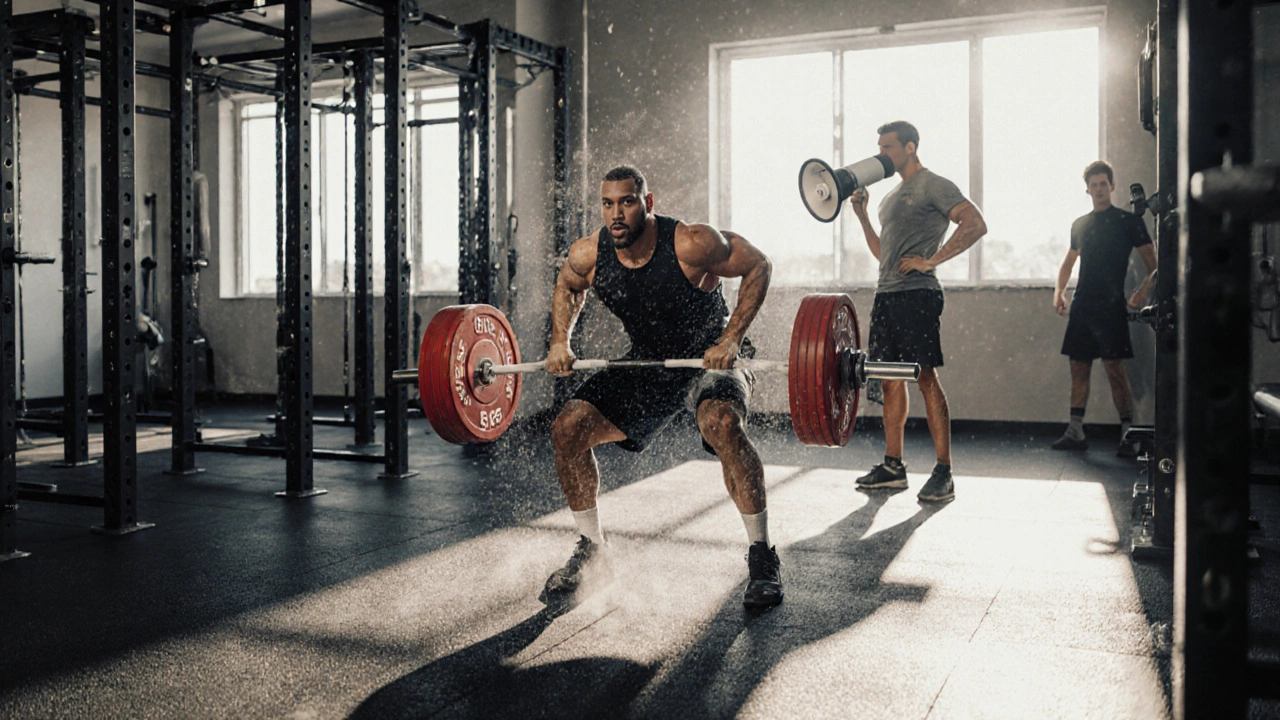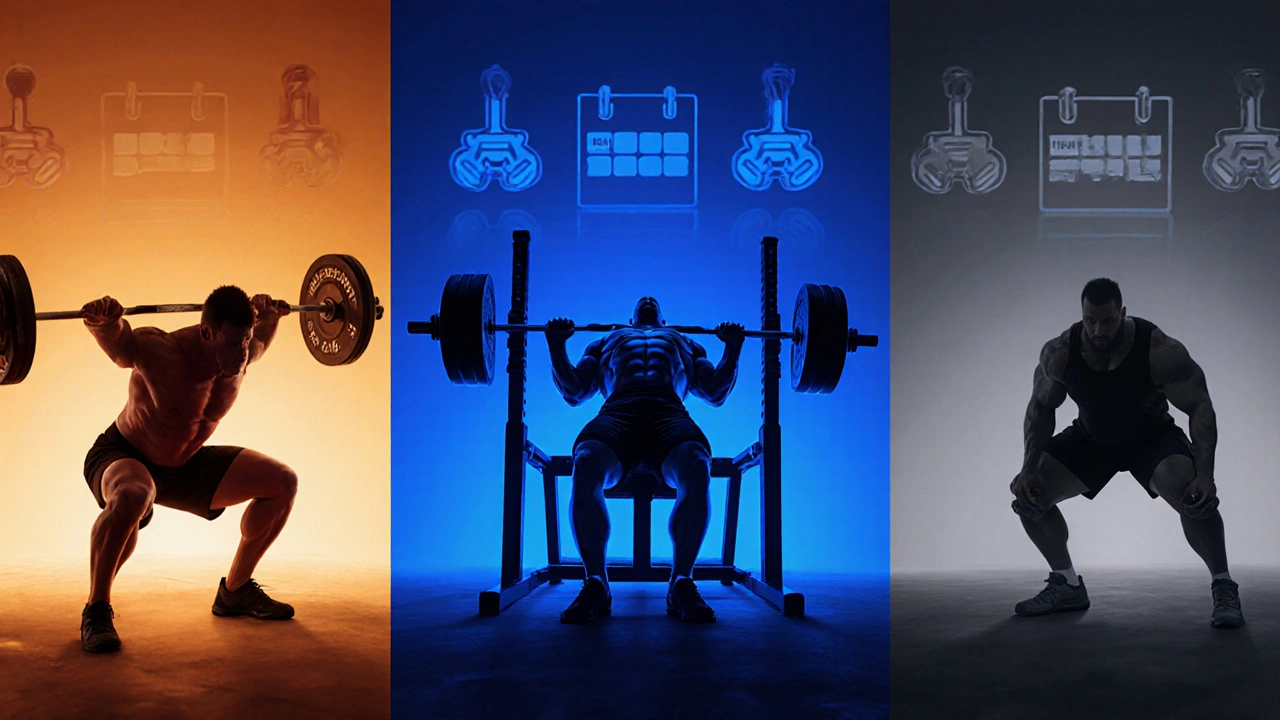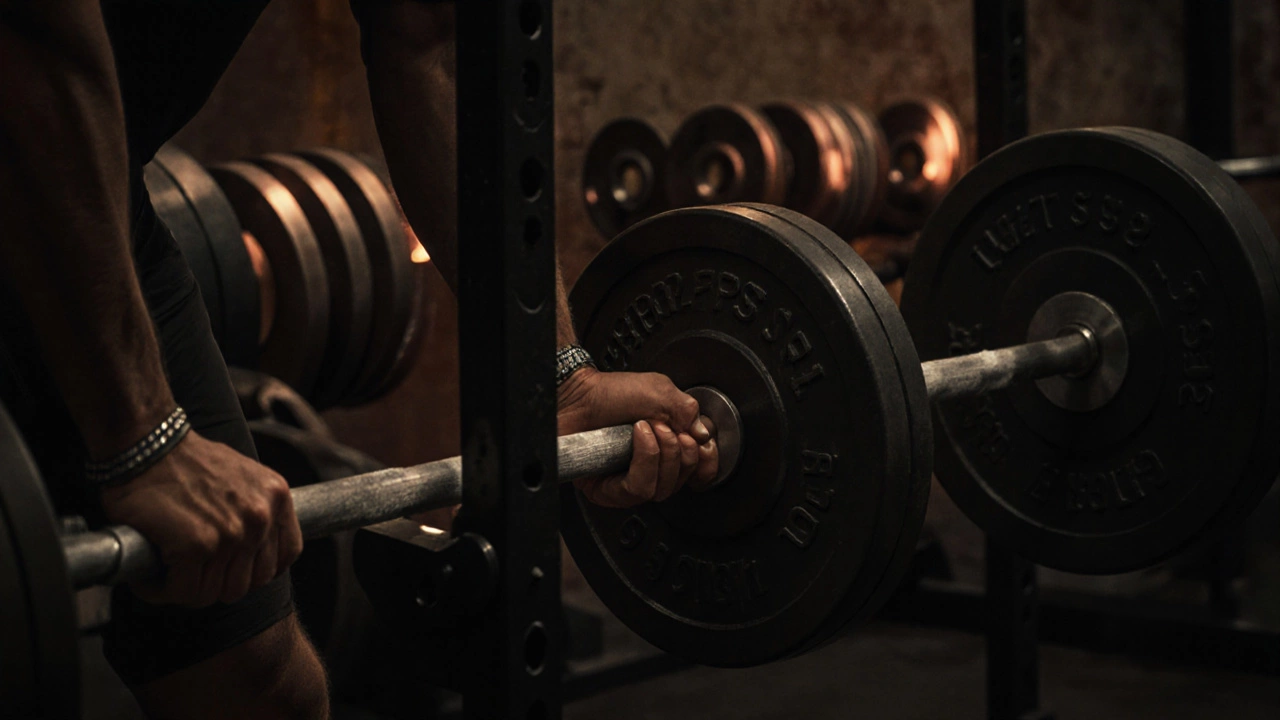What Does 55 Mean in the Gym? A Simple Guide to the 5x5 Workout

5x5 Workout Planner
Your Workout Summary
Progress Tips
- For upper-body lifts: Add 5 lbs each session if you complete all sets.
- For lower-body lifts: Add 10 lbs each session if you complete all sets.
- Rest 2-3 minutes between sets for squats and deadlifts.
- Use a 2-0-1 tempo (2 sec down, no pause, 1 sec up).
Ever walked into a weight room and saw someone shout “5 5!” and wondered what that actually means? In the world of strength training, “5 5” isn’t a random code-it’s shorthand for a classic workout structure that many beginners and seasoned lifters swear by.
What “5 5” actually stands for
The phrase 5x5 workout describes a routine built around 5 5 training protocol performing five sets of five repetitions for each main lift. The goal is to prioritize strength gains by using relatively heavy loads while keeping the total volume manageable.
Core lifts that make up a 5 5 routine
Most 5 5 programs revolve around a handful of compound movements that recruit multiple muscle groups at once. The typical roster includes:
- Barbell squat a lower‑body exercise that targets quads, glutes, and core
- Bench press a push movement focusing on chest, shoulders, and triceps
- Deadlift a posterior‑chain lift that works the back, hamstrings, and grip
- Overhead press a vertical push that strengthens shoulders and triceps
These four lifts cover almost every major muscle group, so you can hit the gym three times a week and still get a full‑body stimulus.
Popular 5 5 programs you’ll hear about
Two names dominate the 5 5 conversation:
- StrongLifts 5×5 a beginner‑focused system that cycles the four core lifts across three training days
- Starting Strength coach Mark Rippetoe’s classic program that also uses five sets of five reps for the main lifts
Both follow the same math-five sets, five reps, heavy weight, three‑day split-but they differ slightly in accessories and progression speed. StrongLifts adds a second squat each week, while Starting Strength sticks to a single squat per session and includes a power clean for advanced lifters.

How to structure the week
A typical week looks like this:
- Day1 - Squat, Bench Press, Barbell Row
- Day2 - Squat, Overhead Press, Deadlift
- Day3 - Squat, Bench Press, Barbell Row
Notice the squat appears every workout. This frequency is intentional; it teaches proper technique while providing the neural adaptation needed for rapid strength gains.
Progressive overload: the engine behind the gains
The backbone of any 5 5 routine is progressive overload gradually increasing the weight lifted over time. Most programs prescribe a simple rule: add 5lb (2.5kg) to the upper‑body lifts and 10lb (5kg) to the lower‑body lifts each session, provided you hit all five sets of five reps with good form.
If you miss a rep or struggle on the last set, stay at the current weight for the next workout. Consistency beats occasional spikes.
Rest intervals and tempo
Because you’re using heavy loads, the rest period matters. Aim for 2‑3minutes between sets for the squat and deadlift, and 1‑2minutes for bench and overhead press. A common tempo is “2‑0‑1” (two seconds down, no pause, one second up), which keeps tension high without compromising safety.
The rest interval ties back to recovery the time your nervous system and muscles need to replenish ATP stores. Shorter rests can turn the session into a hypertrophy‑focused workout, while longer rests keep the focus on pure strength.
Common pitfalls and how to avoid them
- Skipping warm‑up sets. Jumping straight into a 55 set can jeopardize form. Start with 2‑3 lighter sets to prime the joints.
- Neglecting technique. Heavy weight only matters if you’re moving it safely. Record yourself or ask a spotter for feedback.
- Chasing weight too fast. Adding too much too soon leads to plateaus and injury. Stick to the prescribed increments.
- Skipping accessory work. Though the core lifts are powerful, weak hips, rotator cuffs, or core muscles can limit progress. Add simple mobility drills and band work.

Tips for beginners starting a 55 plan
- Begin with an empty bar (usually 45lb/20kg) for each lift to master the pattern.
- Log every session-sets, reps, and weight-so you can see the progression chart.
- Focus on grip, foot placement, and bar path before loading the plates.
- Eat enough protein (≈1.6g per kg bodyweight) and get 7‑9hours of sleep to support recovery.
- Plan deload weeks after 4‑6weeks of consistent gains; drop the weight by 10% for a session.
55 vs. other beginner programs
| Program | Sets×Reps | Training Days/Week | Progression Rate |
|---|---|---|---|
| StrongLifts 5×5 | 5×5 | 3 | 5lb upper‑body / 10lb lower‑body per session |
| Starting Strength | 3×5 (main lifts) | 3 | 5lb/10lb per session |
| 5×10 Hypertrophy | 5×10 | 4 | 2‑5lb increments weekly |
| 4×8 Power | 4×8 | 3 | Same as 5×5 but with lighter loads |
If pure strength is your primary goal, the 55 format usually outperforms higher‑rep schemes because the stimulus is more focused on neural adaptation. For those chasing size or looking for less intense feel, the 5×10 or 4×8 options can be more enjoyable.
When to move on from a 55 program
Typical lifters stay on a 55 plan until they plateau-usually after 12‑20weeks. Signs you’re ready for a new challenge include:
- Missing the final rep on most sets for three consecutive workouts.
- Feeling the lifts are no longer “hard” despite adding weight.
- Desiring more variety (e.g., incorporating dumbbell work or tempo training).
At that point, you might transition to a “531” program, add periodized phases, or start mixing in assistance exercises.
Frequently Asked Questions
What does “55” actually indicate in a workout?
It means five sets of five repetitions for a given lift, typically using a heavy weight to build strength.
Can I do a 55 routine if I’m a complete beginner?
Yes. Most programs start with just the barbell, focusing on form before adding plates. Progress slowly and track every session.
How much weight should I add each workout?
A common rule is 5lb (2.5kg) for upper‑body lifts and 10lb (5kg) for lower‑body lifts, as long as you complete all five sets of five reps with good technique.
How many days per week should I train with 55?
Three non‑consecutive days (e.g., Monday, Wednesday, Friday) provide enough recovery while keeping the frequency high enough for strength gains.
When is it time to switch from a 55 program?
If you miss reps consistently, stop seeing strength jumps after several weeks, or want more variety, it’s a good cue to transition to a periodized or assistance‑heavy program.
Understanding the “55” language unlocks a proven path to real strength. Whether you’re stepping into the gym for the first time or looking to solidify a foundation, the 55 approach offers a clear, measurable roadmap. Grab a bar, log your numbers, and watch the plates add up-one set at a time.

